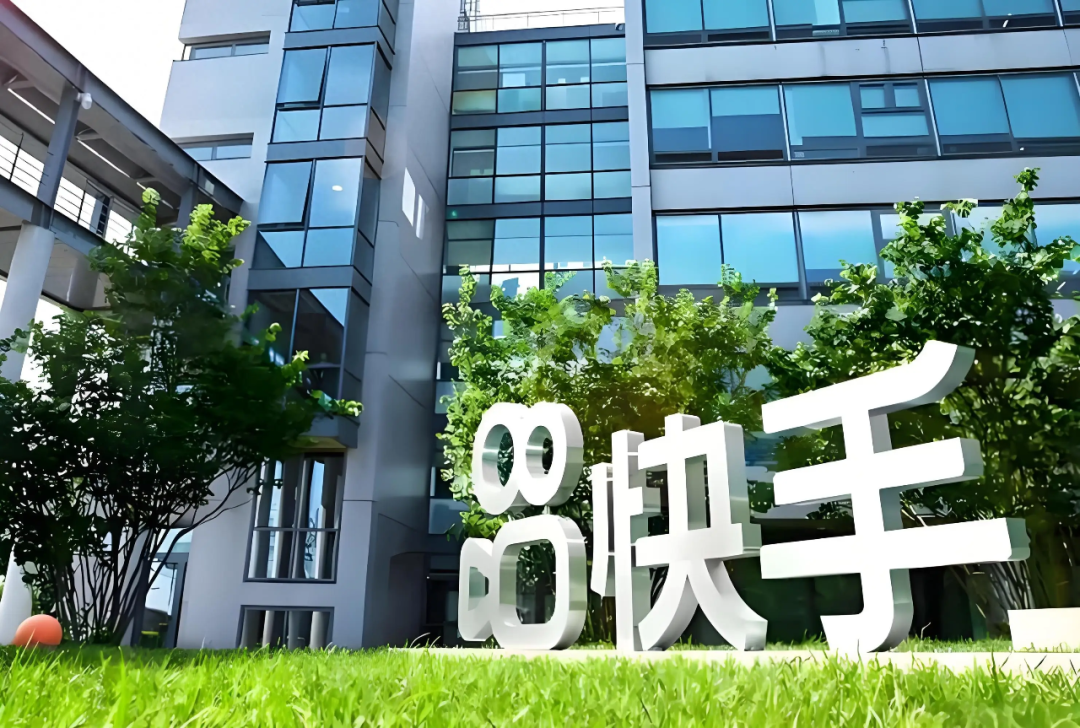Kuaishou's Revenue Growth Hinges on Kuling AI
![]() 06/12 2025
06/12 2025
![]() 400
400

Kuling AI has once again emerged as the "face" of Kuaishou.
On May 27, Kuaishou released its first-quarter 2025 earnings. The financial report revealed that in the first quarter, Kuaishou's revenue stood at 32.61 billion yuan, marking a year-on-year increase of 10.9%; profit for the period amounted to 3.979 billion yuan, down 3.4% year-on-year; and adjusted net profit reached 4.58 billion yuan, a slight decline of 2.6% year-on-year, with profit margin increasing to 14.0%.
Mixed results, yet Cheng Yixiao stabilizes the situation
By business segment, Kuaishou's online marketing services, live streaming, and other services (including e-commerce), the "three pillars," grew by 8%, 14.4%, and 15.2% year-on-year, respectively.
While all sectors recorded growth, online marketing services decelerated, failing to maintain the double-digit growth rates of previous quarters. From the first to the fourth quarter of 2024, Kuaishou's online marketing service revenue grew by 27.4%, 22.1%, 20.0%, and 13.3% year-on-year, respectively, with full-year 2024 revenue for this segment increasing by 20.1% year-on-year.
This may explain why Kuaishou's revenue growth has hovered around 10% for four consecutive quarters. Two months ago, Kuaishou released its fourth-quarter and full-year 2024 financial results, highlighting two sets of data: in terms of revenue composition, the year-on-year growth rates of online marketing services and other service revenues both exceeded 20%.
In response, Cheng Yixiao clarified in a subsequent conference call that given the gradual release of growth potential in key industries such as content consumption, e-commerce, and local life services, he remained confident that Kuaishou's online marketing service revenue would revert to double-digit year-on-year growth in the second quarter.
This can be interpreted as the sluggish growth of online marketing services in the first quarter being affected by the off-season. Among them, the impetus behind the "potential release" of content consumption stems from Kuaishou's internal adjustments. Earlier this year, Kuaishou integrated its content-based monetization businesses, such as short dramas, games, and novels, establishing the Content Consumption Business Center. Cheng Yixiao revealed that in the first quarter of this year, consumption of Kuaishou's mini-games surged by over 30% year-on-year.
He said, "Advertising materials in the form of short dramas, novels, and mini-games not only provide value for advertising monetization but also enable seamless content-user interactions, further realizing 'advertising as content, creation as operation.'"
Fortunately, the decline in online marketing services was arrested by the live streaming business and other services (e-commerce). For instance, after four consecutive quarters of revenue decline and a 5.1% year-on-year drop in total revenue for 2024, the live streaming business rebounded to a year-on-year growth rate of 14.4% in the first quarter, with a significant increase in revenue share.
This is attributed to Kuaishou's restoration and adjustment of the live streaming ecosystem over the past year. For example, in the first quarter, Kuaishou focused on supporting high-engagement categories such as grand stages, multi-person interactions, and fighting games, and collaborated deeply with game manufacturers to shift live streaming content from early, extensive, and highly stimulating emotion-driven content to interest-based content, aiming to create a more stable daily viewing scenario.
Additionally, the e-commerce business has emerged as the core driver of the growth of other service revenues. Financial report data shows that in the first quarter, Kuaishou's e-commerce GMV (Gross Merchandise Volume) increased by 15.4% year-on-year to reach 332.3 billion yuan. Currently, the general merchandise shelf contributes approximately 30% to Kuaishou's total e-commerce GMV.
This figure still trails behind Douyin's e-commerce. In the composition of Douyin's e-commerce GMV in 2024, the shelf scenario accounted for over 40%, merchant self-broadcasting slightly exceeded 30%, and influencer live streaming accounted for approximately 30%.
Kuaishou's first-quarter financial report also released a positive growth signal: the overseas business achieved a positive quarterly operating profit for the first time at the overall level.
Can Kuling AI take charge?
Considering Kuaishou's financial performance in recent quarters, since Cheng Yixiao took sole charge a year and a half ago, Kuaishou's fundamentals have begun to stabilize, yet seasonal fluctuations in business operations have intensified. With intensifying industry competition, Kuaishou may encounter scenarios where performance reports exhibit wide fluctuations, which is not a mature performance for the "first short video stock."

Both Cheng Yixiao and Kuaishou face new challenges: constructing a new growth model and identifying new growth drivers. His focus is on AI, hoping that AI will take charge. Unlike ByteDance, Alibaba, Tencent, and other full-stack capabilities, Kuaishou concentrates on the vertical video field, with Kuling AI as its flagship.
Currently, Kuaishou has established an AI strategic roadmap centered on Kuling AI:
First, Kuling, a large model for video generation. Shortly after its launch in June last year, Kuling AI embarked on commercialization. According to the financial report, in the first quarter of this year, Kuling AI's operating revenue surpassed 150 million yuan. Currently, Kuling AI is widely applied in various industries such as advertising, short dramas, and smart devices.
Second, the deep integration of AI capabilities with its core businesses, particularly in the two pillar businesses of e-commerce and advertising. Kuaishou aims to preempt the industry by deeply applying AI capabilities to existing businesses, bridging gaps between various businesses, enhancing user (including creator) experience on the C-end, and helping merchants improve efficiency on the B-end, from which Kuaishou's performance also benefits.
This is summarized in Kuaishou's financial report as the company continuously advancing the empowerment of businesses through artificial intelligence technology, consolidating its content and commercial ecosystem through intelligent upgrades, and enhancing the platform usage experience for users and content creators.
That is, "Kuling AI has been extensively used in various industries such as advertising, short dramas, and smart devices, which also bolsters our confidence in our vision of Kuling AI becoming the infrastructure for video creation in the new AI era."
Kuaishou envisions Kuling AI as the "infrastructure for video creation in the new AI era." If this goal is realized, it may mark another pivotal moment in Kuaishou's "resume," following its transformation from "GIF Kuaishou" to Kuaishou and its leap from a tool to a short video content community.
Kuaishou believes that in the medium to long term, AI is poised to become one of the company's second growth curves.
To this end, Kuaishou not only "upgraded" Kuling AI internally by establishing a separate Kuling AI Business Unit, comprising a Product Department, an Operations Department, and a Technology Department, responsible for the Kuling, Kutu, and other series of large model businesses, with the head directly reporting to Cheng Yixiao.
Moreover, Kuaishou is willing to invest heavily in AI. For example, over the past year, Kuaishou has allocated more computing resources towards the development of large video models. In the first quarter of this year, Kuaishou increased its R&D expenditures, which rose by 16% year-on-year to 3.298 billion yuan, and the proportion of R&D investment also increased from 9.7% in the same period last year to 10.1% this year.
This signifies that within Kuaishou's business segments, Kuling AI is no longer a standalone innovative business but a mature commercialization engine that will comprehensively propel the comprehensive upgrade of content supply, advertising placement, and distribution functions to achieve commercialization more efficiently.
However, the reality faced by Kuaishou is that while the importance and focus on AI in its financial reports continue to escalate, its core support still hinges on the traditional "three pillars," with the "e-commerce + advertising" model serving as the primary driver.
This underscores the fact that Kuaishou's AI, or Kuling AI, still has a long way to go before it can genuinely realize large-scale commercial revenue and "earn money to support the family." Even though Cheng Yixiao consistently promotes to the market, emphasizing that Kuaishou is a technology company, its underlying nature remains that of a traditional short video platform.
This positions Kuaishou's business model in a unique position, where its distinctive "Laotie Economy" – a business model grounded in robust community and private domain traffic management, establishing "e-commerce + advertising" – also presents new characteristics.
On the one hand, Kuaishou's "Laotie" (users) are no longer sufficient, and the growth space has reached its ceiling. The financial report shows that in the first quarter of this year, the average monthly active users of the Kuaishou App were 408 million, and the monthly active users were 712 million. Both data points exhibited single-digit year-on-year growth, at 3.6% and 2.1%, respectively. The monthly active users continued the slowdown trend observed in the past year, with a net loss of 24 million month-on-month. This may be influenced by investments, but it more significantly illustrates that Kuaishou's user base growth has essentially peaked.
On the other hand, Kuaishou's efficiency in monetizing its existing user base is still improving, which can also be seen as an indication of strong user stickiness and a high willingness to pay on Kuaishou. In the first quarter of this year, against the backdrop of only a slight increase in user scale, Kuaishou's per-user online marketing revenue growth rate outpaced the user growth rate, increasing by 4.2% year-on-year to reach 44.1 yuan. The commercial value of users in this gifted content community may make Xiaohongshu envious.
However, the "charging" of hardcore users cannot alleviate the embarrassment that Kuaishou's AI investment is not proportionate to its revenue. Jin Bing, CFO of Kuaishou, stated in a conference call regarding the financial report that Kuling AI had achieved positive marginal profits at the reasoning level, and from a full-year perspective, the impact of the AI strategy, including Kuling, on the group's overall profit margin would be between 1% and 2%.

To some extent, Kuling AI has ascended to the first tier in less than a year, primarily due to its early bet on technology and exploration of business models.
However, the current industry landscape is volatile, and the iteration capabilities of large models are increasingly rapid. AI players, including Kuaishou, cannot guarantee that they will always be in a leading position. For example, Google's AI video model Veo 3, released on May 20, ushered AI video generation out of the "silent film era" first.
Kuaishou is actively transforming into the AI domain to become a genuine technology company. However, the competitive pressure it faces is greater than ever before.
Nonetheless, Cheng Yixiao still harbors high hopes for the role of AI. He stated in the financial report: "In the future, we are confident that the continuous unleashing of AI potential will help Kuaishou further enhance quality and efficiency, particularly bringing new increments to the growth of our online marketing and e-commerce businesses."
As for how long this future will take, perhaps only Cheng Yixiao knows. Its main business remains the traditional "three pillars," and the money earned still needs to be invested in AI.
Reference material:
Dingjiao One, "Kuaishou's E-commerce AI Enters the Fray, Focusing on Efficiency"







